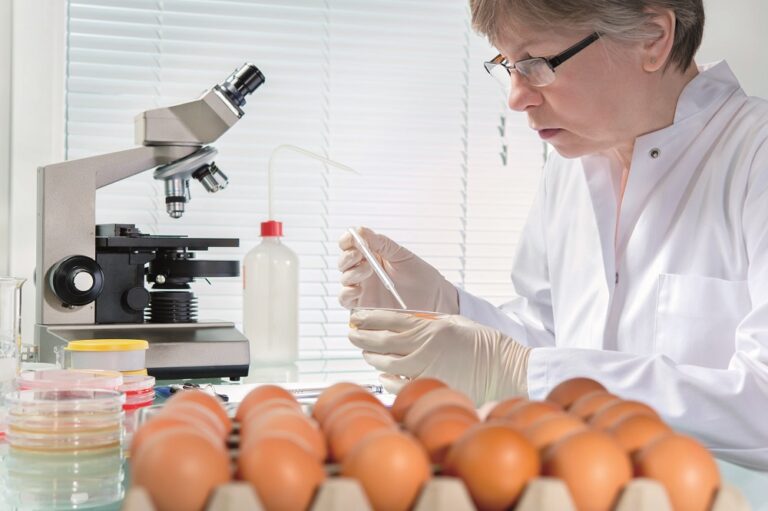A recent outbreak of salmonella has reminded the whole industry that it needs to take a fresh look at prevention to avoid a resurgence of cases
Salmonella is one of the top foodborne bacterial diseases worldwide, with eggs and eggbased products being the primary cause of salmonella-related illnesses. A recent outbreak at a packing centre in Kent that lead to the Food Standards Agency issuing a product recall was a stark reminder of the risks involved. UK producers have long recognised that there is no single measure to control salmonella; it is instead widely accepted that a holistic industry commitment and approach is needed.
At the recent Elanco Layer Conference, a recurrent theme was avoiding complacency about previous achievements and continuing to strive to improve best practice to reduce salmonella outbreaks in the future. David Heckman, global food safety consultant at Elanco, was very clear when he addressed the conference: “Complacency has no place in salmonella prevention and management.”
SALMONELLA IN EUROPE
Mark Williams, chief executive of the British Egg Industry Council, told delegates that the UK is the fourth largest EU egg producer with 11.2% of the laying hens in the EU market. Despite it being such a big egg-producing nation, the UK’s salmonella enteritidis prevalence is the lowest across Europe – 0.1% – the same as Romania, which has only 2.1% of the EU’s laying flock. Germany has the largest market share at 12.8% and has a salmonella enteritidis prevalence of 0.5%. But in Latvia, salmonella prevalence rises to 5.7%.
The European Centre for Disease Prevention and Control (ECDC) published a report in February 2019 about the proactive control of salmonella. The report stated that a decrease in salmonella variations throughout Europe by just 1% or 2% would have a significant decrease in human salmonella cases, reducing them by 6%.
The review also took note of risk factors for laying hens, which revealed a lower occurrence in non-cage compared with cage systems. Conclusive evidence was found to suggest that an increased stocking density, larger farms and stress result in increased occurrence, persistence and spread of salmonella in laying flocks.
THE 3RS OF SALMONELLA PREVENTION
Heckman presented to the conference his plan for prevention of salmonella, which he called the 3Rs: (1) relentless (2) risks and (3) uRgency. Relentless, he said, refers to the relentless pressure that the industry is under from multiple sectors including the media, activists and the Government. Rules around egg production have also become relentless with more rules than in the past; most of which are made around producers.
Risk, Heckman said, is prevalent in the industry and it is essential that we know exactly where it is coming from at all times. When assessing risk, it’s important to focus on three main areas: economic, legal and business, and brand. From an economic perspective, a salmonella outbreak can have catastrophic effects on businesses with the possibility of being unable to sell a product or prices being discounted.
Heckman said that from a business and brand point of view, it’s important to remember the media’s ability to influence public opinion, snowballing the issue and creating lasting negative thoughts towards the brand well beyond the time of the outbreak. While in most cases the accountability is on the consumer to prepare their food correctly, the legal risk when producing a potentially contaminated product means that accountability for illness cannot be shifted to the consumer.
The final R is uRgency, said Heckman. It is crucial to ensure your story is being told correctly and misinformation on social media is being addresses with urgency. While salmonella is still a real risk, it’s important to remember that the UK has some of the best standards in the world, and, as standards and prevention continue to improve, this risk will decrease.
To ensure the standards are upheld it is important producers do not become complacent but to keep on top of prevention strategies. That way, the UK’s excellent record on salmonella will be maintained.


